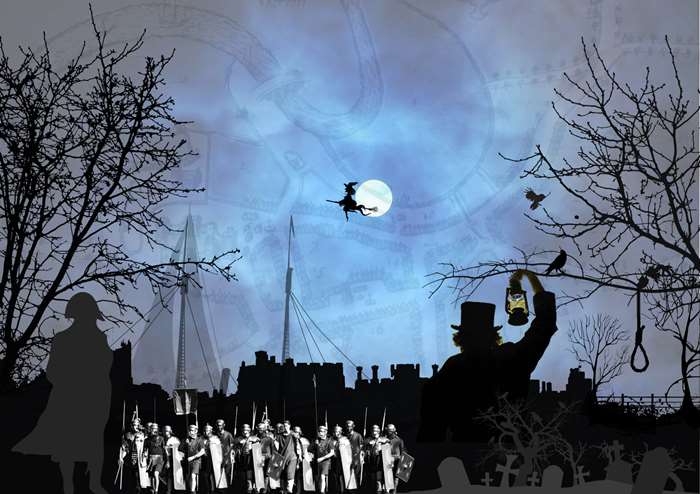Lancaster Square Routes - Overview

Lancaster Lore and Legends
The project began life in late 2008 early 2009. This overview explains why and how Lancaster Square Routes was developed and the core ideas behind it.
All of this information sets the context for the phase programme of works now being delivered.
Why are we doing this?
Lancaster’s public spaces are intrinsic elements of the city’s historic fabric. Unfortunately, few of the public spaces are of such a quality that people want to linger and use them as places for rest, recreation and social interaction.
Andrew Dobson, Head of the Regeneration and Planning Service, said: “Lancaster City Centre has a long enviable history and is a major source of employment and tourism.
“Unfortunately, over the years, the centre has deteriorated and we are now faced with a situation where the condition of the streets is poor and cluttered, which does not do enough to showcase its assets.
“Lancaster Square Routes aims to rejuvenate one of the north west’s most important historical city centres and strengthen its position as a major destination both for visitors and residents of the district.”
It is now accepted that investing in quality public spaces generates economic benefits; it enhances visitor experiences, stimulates growth in the visitor economy, raises property values and helps to increase income and profit for local business.
How are we doing this?
The Northwest Regional Development Agency (NWDA) awarded money to the council in late 2008 to prepare detailed design proposals to upgrade a number of spaces within the city centre, including Market Square, Sun Street and the Castle area.
Lancashire County Council also awarded money to support the involvement of an artist throughout the project.
The council sought comments from all users of these spaces, including residents, visitors and traders to help analyse and evaluate the current issues and potential opportunities. The draft design boards used during the consultation can still be downloaded (May 2009 Public Consultation Boards).
Subsequently a design framework was produced by the council to inform external consultants in producing outline design options for each space.
External design consultants, Gillespies were appointed to lead on preparing exciting and innovative design options for some of Lancaster’s key spaces. Artists and architects Amenity Space worked alongside Gillespies to enhance these proposals.
Detailed designs were approved by the council's Cabinet in October 2010 based on the summer 2010 consultation boards.
The initiative was identified as a means of achieving the 'Economic Regeneration' of the district, one of the council's corporate priorities (2011-2014) and initial budget approved to commence delivery.
The visions constitute a programme of work that can be delivered over time as opportunities and funding permits. Each location proposed for improvement makes for an individual project that in turn can be disaggregated into work packages. By this means the council can gear implementation to the availability of funding, the primary constraint on delivery.
The concept proposals
The proposals are based on 'Three Big Ideas': Lancaster Lore and Legends, Georgian Gem and City Park.
Lancaster Lore and Legends
- Embrace Lancaster’s rich history and heritage from Roman to Georgian, highwaymen to witches
- Use the new public realm and art commissions to tell the lost tales of Lancaster to create a truly unique and vibrant city centre
- Create a city trail that will improve legibility and wayfinding, encourage people to explore the city and enhance the tourist offer
- Use public art to engage the community, encourage interaction with the City’s past, present and future and provide educational opportunities
Georgian Gem
- Enhance the setting of historic buildings and landmarks through high quality public
- realm
- Deliver classic, timeless designs that will stand the test of time
- Combine new and old, with contemporary architectural interventions of the highest quality
- Build upon the city’s history, heritage & local distinctiveness by using locally sourced
- materials, traditions and craftsmanship
- Create spaces that promote cultural activities – art/music/literature and outdoor
- performance and places for restaurants/cafes and evening activities
- Embrace the city’s market by creating places for it to thrive
City Park
- Create a new City Park - a flagship greenspace for Lancaster
- Build upon the city’s cycleways, walkways and natural resources - rivers, coast and country
- Use locally sourced, sustainable materials and groundbreaking new technology
- Encourage the whole community to get involved and take ownership of the park
- Green’ the city centre by introducing trees, lawn and innovative planting in key spaces
Last updated: 17 August 2016
